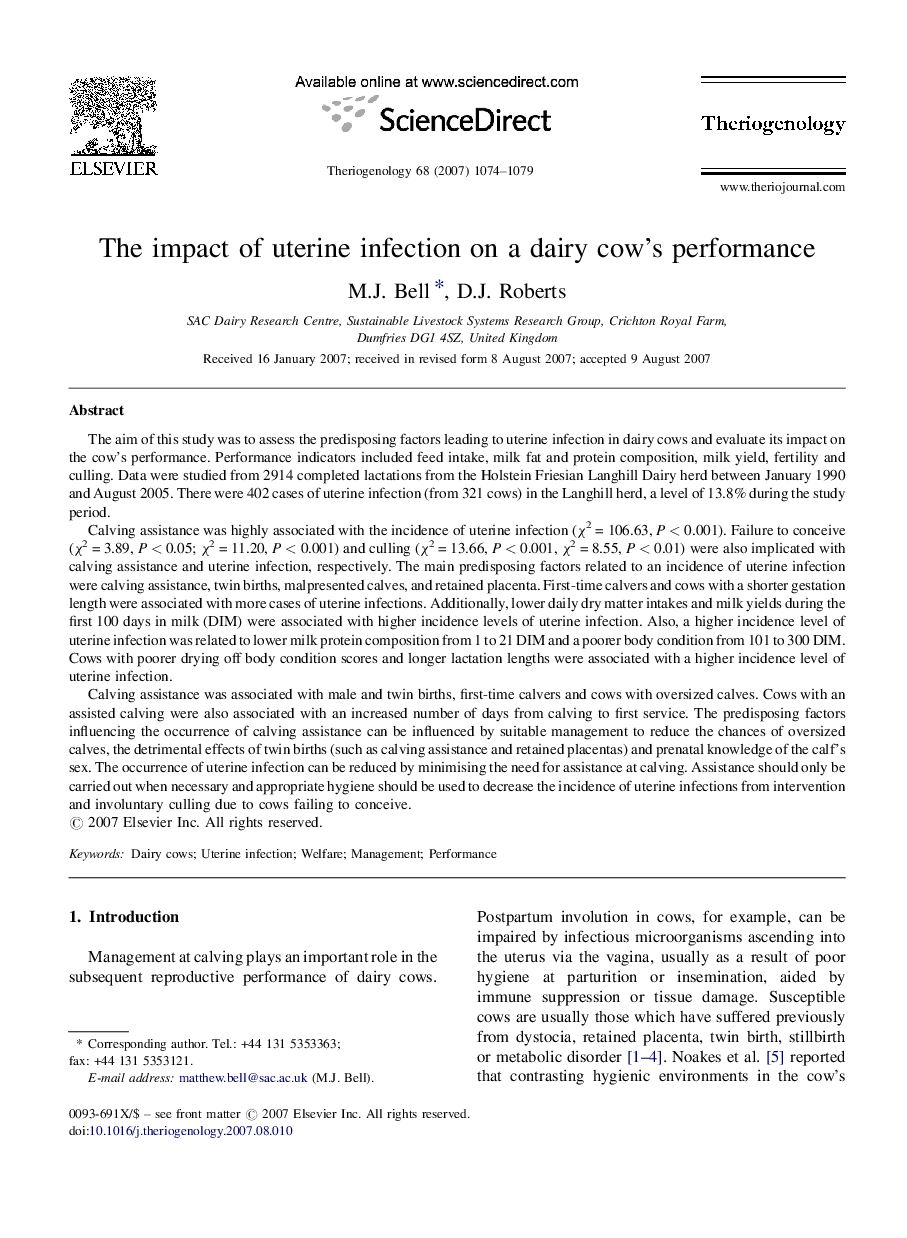| Article ID | Journal | Published Year | Pages | File Type |
|---|---|---|---|---|
| 2097177 | Theriogenology | 2007 | 6 Pages |
The aim of this study was to assess the predisposing factors leading to uterine infection in dairy cows and evaluate its impact on the cow's performance. Performance indicators included feed intake, milk fat and protein composition, milk yield, fertility and culling. Data were studied from 2914 completed lactations from the Holstein Friesian Langhill Dairy herd between January 1990 and August 2005. There were 402 cases of uterine infection (from 321 cows) in the Langhill herd, a level of 13.8% during the study period.Calving assistance was highly associated with the incidence of uterine infection (χ2 = 106.63, P < 0.001). Failure to conceive (χ2 = 3.89, P < 0.05; χ2 = 11.20, P < 0.001) and culling (χ2 = 13.66, P < 0.001, χ2 = 8.55, P < 0.01) were also implicated with calving assistance and uterine infection, respectively. The main predisposing factors related to an incidence of uterine infection were calving assistance, twin births, malpresented calves, and retained placenta. First-time calvers and cows with a shorter gestation length were associated with more cases of uterine infections. Additionally, lower daily dry matter intakes and milk yields during the first 100 days in milk (DIM) were associated with higher incidence levels of uterine infection. Also, a higher incidence level of uterine infection was related to lower milk protein composition from 1 to 21 DIM and a poorer body condition from 101 to 300 DIM. Cows with poorer drying off body condition scores and longer lactation lengths were associated with a higher incidence level of uterine infection.Calving assistance was associated with male and twin births, first-time calvers and cows with oversized calves. Cows with an assisted calving were also associated with an increased number of days from calving to first service. The predisposing factors influencing the occurrence of calving assistance can be influenced by suitable management to reduce the chances of oversized calves, the detrimental effects of twin births (such as calving assistance and retained placentas) and prenatal knowledge of the calf's sex. The occurrence of uterine infection can be reduced by minimising the need for assistance at calving. Assistance should only be carried out when necessary and appropriate hygiene should be used to decrease the incidence of uterine infections from intervention and involuntary culling due to cows failing to conceive.
